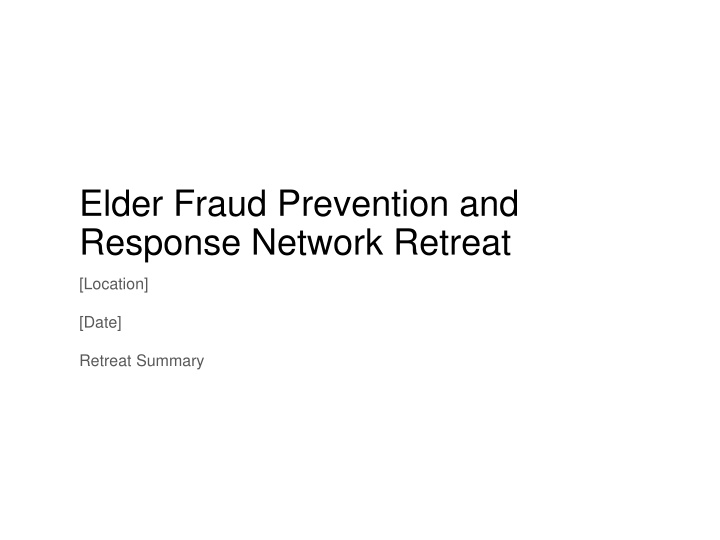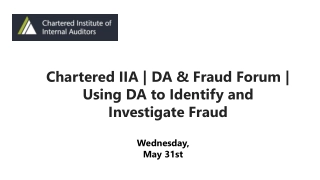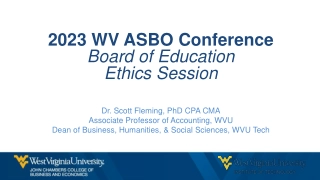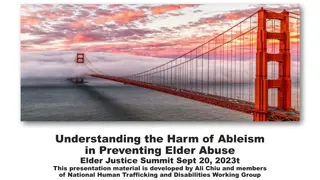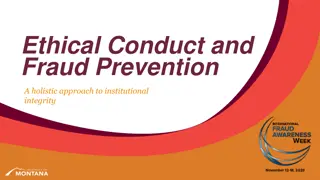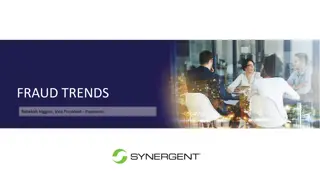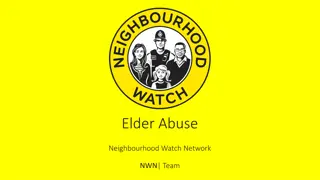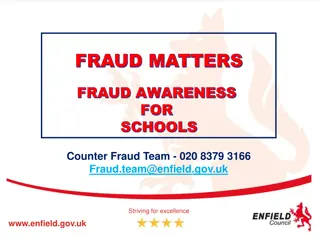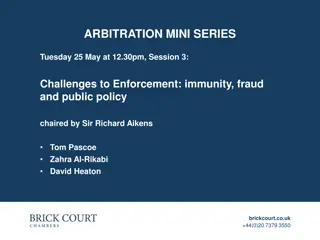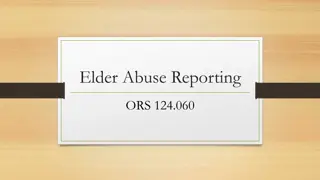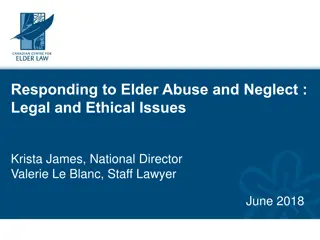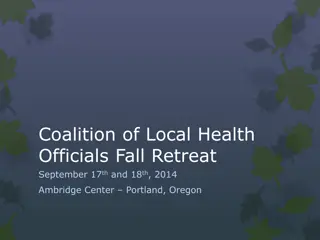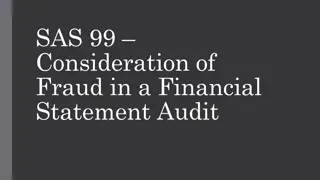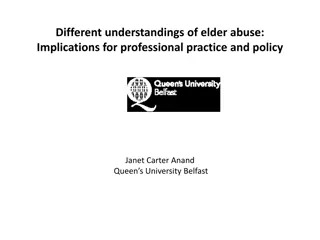Elder Fraud Prevention Network Retreat Summary
The Elder Fraud Prevention Network Retreat gathered elder justice stakeholders to enhance collaboration in preventing and resolving cases of elder financial exploitation. Participating organizations included AARP, Office of Public Guardian, and more. Guest speakers emphasized the importance of protecting older adults. Group activities focused on improving communication, developing protocols, and expanding services for elder financial abuse prevention. Explore key insights and next steps from the retreat.
Download Presentation

Please find below an Image/Link to download the presentation.
The content on the website is provided AS IS for your information and personal use only. It may not be sold, licensed, or shared on other websites without obtaining consent from the author.If you encounter any issues during the download, it is possible that the publisher has removed the file from their server.
You are allowed to download the files provided on this website for personal or commercial use, subject to the condition that they are used lawfully. All files are the property of their respective owners.
The content on the website is provided AS IS for your information and personal use only. It may not be sold, licensed, or shared on other websites without obtaining consent from the author.
E N D
Presentation Transcript
Elder Fraud Prevention and Response Network Retreat [Location] [Date] Retreat Summary
Table of contents Page X Retreat goal Page X Participating organizations Page X Thoughts from our guest speakers Page X-X Group activity and results Page X-X Priorities Page X-X Quotes from retreat participants Page X Possible next steps Page X Opportunities for innovation Page X-X Who can help & retreat attendance list 2
Retreat goal The goal of the Elder Fraud Prevention & Response Network Retreat was to gather elder justice stakeholders to discuss how they can expand and enhance collaboration to prevent and resolve cases of elder financial exploitation in [Location]. 3
Sample of Participating organizations AARP Office of Public Guardian Local Credit Union State Attorney s General s Office Local banking institution U.S. Postal Inspector Consumer Financial Protection Bureau Adult Protective Services U.S. Attorney's Office Association of Chiefs of Police Federal Bureau of Investigation Center for Crime Victim Services Financial Abuse Specialist Team Department of Financial Regulation Local Police Department Legal Aid Local Federal Credit Union 4
Thoughts from our guest speakers This is a call to arms and a call to embrace our shared duty to protect older adults from elder financial exploitation. - Guest speaker 5
Group activity Retreat participants broke into small groups to consider the following question: How can [Location s] elder justice stakeholders expand and enhance collaboration to prevent, address and resolve cases of elder financial exploitation? 6
Group activity results Participants expressed interest in the following: Developing more open communication and effective information-sharing Developing statewide protocols for elder financial exploitation case referrals and reporting Professional cross-training to learn about other stakeholders abilities and limitations Creating a contact list or resource guide with key individuals in various organizations and an explanation of their roles Expanding the services and activities of the Financial Abuse Specialist Team (FAST of [location]) Meeting on a regular basis to build stronger relationships 7
Priorities for our network Participants chose three priorities: 1. 2. 3. Professional cross-training and resource sharing Community education and outreach Legislative and regulatory advocacy Priorities were rated by ease and importance. 8
Sample Quotes from retreat participants Elder financial exploitation is a despicable crime that requires community collaboration and teamwork. We have different levels of understanding. We need a rapid response team. What about confidentiality? We need to develop capabilities and competencies in investigating and prosecuting elder fraud. There is a lot of good work happening and people want to collaborate. 9
Possible next steps 1. Professional cross-training and resource sharing Reach out to appropriate stakeholders to support or lead efforts of the larger network Identify members to lead working groups or subcommittees that support the development of new initiatives throughout the community Create working groups to address each of the three identified priority areas Identify new stakeholders to invite to future meetings Reach out to co-leadership prospects before the next meeting to request and secure support with: Organizing meetings Identifying and inviting key stakeholders Chairing or leading working groups Leading projects and initiatives that emerge within the network 10
Possible next steps 2. Plan the next meeting and the meetings that follow At the next meeting, break into working groups representing each of the priority focus areas to plan specific projects and tasks Find an online tool to help coordinate schedules If possible, provide audio-visual support to remote meeting attendees Determine who will provide cross-training and when Have informal brown bag lunches to encourage peer networking Explore key dates to remember for opportunities for project launches 11
Possible next steps 3. Identify additional steps toward network goals Prepare suggested action steps related to each priority Task working groups with deciding on projects and next steps, and assign tasks to individual members of the working group Have each working group report on their progress at each meeting 12
Possible next steps 4. Create an information-sharing platform Create a list of key network contacts and their areas of expertise to distribute to network members Create a private email listserv or discussion group to share information, ideas, questions, and resources Create communication platforms for each working group 13
Possible next steps 5. Begin cross-training and resource sharing initiatives Develop list of cross-training topics and questions Organize cross-training sessions and collaboration Hold annual or more frequent round-table discussions for professionals Hold train the trainer sessions to educate professionals so they can share information about elder financial exploitation with the community 14
Possible next steps 6. Begin protocol development and other initiatives, including: Develop a regional or statewide protocol for response and referral for elder financial exploitation cases Look to the protocol created in Maine as a potential template Develop referral criteria and a list of point persons for various issues Develop a template for information sharing about elder fraud cases Develop a master list of elder fraud resources Develop a list of questions professionals can ask suspected fraud victims to get more information about the situation Consider laws and policies that affect identification of and response to elder fraud 15
Opportunities for innovation Consider outreach to: Meal delivery services Libraries Faith communities/organizations Local media Other local contacts 16
Opportunities for innovation Consider outreach to other groups: Health care providers and emergency medical responders Retirement communities Widows/widowers New immigrants Younger adults 17
Who can help Participants discussed other groups that could work with or support the activities of the network: Long-Term Care Ombudsman Psychological experts Legal service providers Medical community & hospitals, nursing staff, other health care professionals CPAs/Accountants Senior centers, nursing homes, and assisted living facilities Faith-based organizations Postal employees Family and professional caregivers Town clerks Libraries 18
Retreat attendance list Organization Name E-mail Insert text here Insert text here Insert text here Insert text here 19
